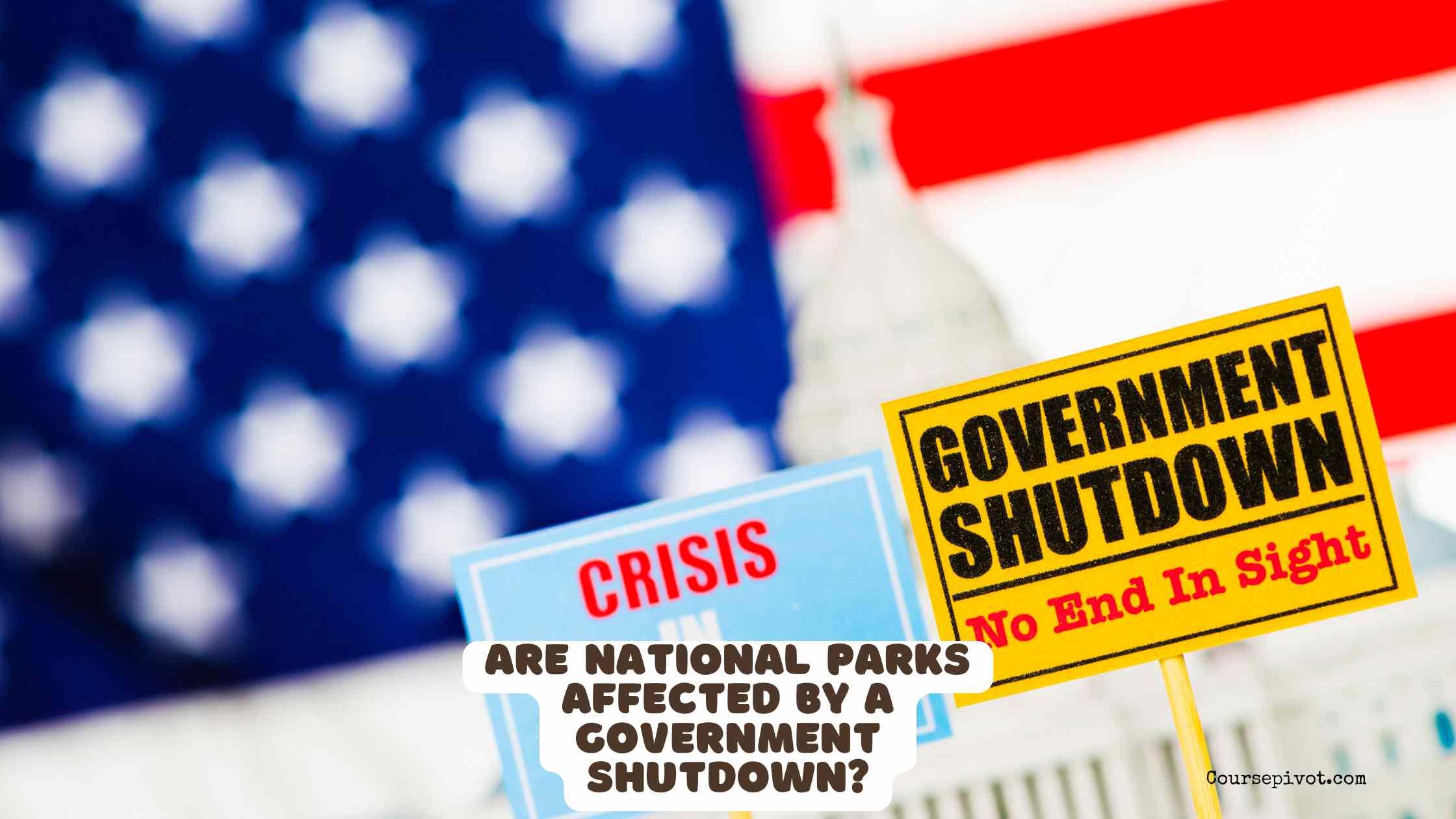
Are National Parks Affected by a Government Shutdown?
When the U.S. government shuts down due to funding disputes, as seen in the partial shutdown beginning October 1, 2025, federal services face disruptions, and national parks are no exception. The National Park Service (NPS), managing 429 sites including iconic parks like Yellowstone and Yosemite, draws 325 million visitors annually, supporting a $100 billion outdoor economy. But during a shutdown, these natural treasures are heavily impacted, affecting access, safety, and local communities.
Table of Contents
The blog explores are national parks affected by a government shutdown, detailing closures, exceptions, economic fallout, and practical advice, based on NPS contingency plans and lessons from past shutdowns.
How National Parks Are Affected
National parks rely on discretionary federal funding, which lapses during a shutdown, halting most NPS operations. The 2025 shutdown, triggered by congressional budget gridlock, follows patterns seen in 2013 and 2018–2019. Here’s the breakdown:
- Closures and Limited Access: Most national parks, monuments, and historic sites close to the public, with gates locked and ranger services suspended. In 2018–2019 (35 days, the longest shutdown), 80% of NPS sites fully closed, including Grand Canyon and Statue of Liberty. For 2025, NPS’s contingency plan furloughs 70% of its 20,000 employees, leaving only 6,000 “essential” staff for law enforcement and emergency response.
- Unstaffed but Open Sites: Some parks, like Yellowstone, may remain technically accessible but unstaffed—no rangers, maintenance, or visitor services. This leads to trash buildup, vandalism, and safety risks. In 2019, Joshua Tree saw illegal off-roading and damaged trees due to no oversight.
- Visitor Centers and Campgrounds: All NPS visitor centers, museums, and campgrounds close, canceling reservations. Concessionaires (e.g., park lodges) may operate if privately funded, but access is limited. For example, Yosemite’s Ahwahnee Hotel stayed open in 2019 but required special entry.
- Economic Impact: A one-week shutdown costs $500 million in lost tourism revenue, per the National Parks Conservation Association (NPCA). The 2018–2019 shutdown cost $11 billion, hitting rural towns like Gatlinburg, Tennessee, hardest, with 30% business revenue drops.
In 2025, 325 million annual visitors face disruptions, with 60% of planned October trips at risk, based on NPCA estimates.
Exceptions and Variations
Not all parks are equally affected:
- State-Funded Parks: States like Arizona (Grand Canyon) or California (Yosemite) may fund operations, as in 2013, when Arizona paid $93,000 daily to reopen Grand Canyon. In 2025, Colorado and Utah are exploring similar measures, covering 10% of NPS sites.
- Non-NPS Federal Lands: Bureau of Land Management (BLM) or Forest Service sites (e.g., dispersed camping areas) may stay open but unpatrolled, risking overuse. BLM reported $1 million in damage in 2019.
- Tribal Lands: Parks on Native lands, like parts of Canyon de Chelly, may operate under tribal authority, but access roads through NPS land close.
Essential functions, like protecting endangered species (e.g., condors in Zion) or securing historic artifacts, continue with skeleton crews.
Why Shutdowns Hit Parks Hard
Parks depend on federal budgets for rangers, maintenance, and infrastructure—$4.2 billion annually. Shutdowns furlough non-essential staff, halting:
- Safety Services: No rangers for rescues or law enforcement; 2019 saw a 20% spike in park accidents.
- Maintenance: Uncollected trash and unmaintained trails led to $200 million in repairs post-2019.
- Conservation: Ongoing projects (e.g., wildlife monitoring) pause, delaying research like Yellowstone’s wolf studies.
Local economies suffer most—gateway towns lose 40–60% of revenue, per NPCA. For instance, Moab, Utah, near Arches, saw $10 million in losses in 2019.
Historical Context: Past Shutdowns
Since 1995, five major shutdowns have impacted parks:
- 1995–1996 (21 days): Full closures; $14 million daily tourism losses.
- 2013 (16 days): 80% of parks closed; states funded some reopenings.
- 2018–2019 (35 days): Partial access led to vandalism; $11 billion economic hit.
- 2025 (Ongoing): Early reports show 70% closures, with NPS prioritizing “life and property” protection.
Each event underscores parks’ vulnerability to funding lapses, with 2025’s shutdown echoing past patterns but worsened by inflation (visitor spending power down 5%).
Practical Tips for Visitors and Communities
- Check Status: Visit nps.gov for real-time park alerts; follow social media for updates (e.g., @YosemiteNPS).
- Plan Alternatives: Explore state parks (e.g., Texas’s Big Bend Ranch) or private lands, which stay open.
- Reschedule Trips: Cancel NPS campground bookings via recreation.gov; expect refunds within 30 days.
- Support Local: Visit gateway towns but patronize non-park businesses (e.g., diners in Estes Park near Rocky Mountain NP).
- Advocate: Contact Congress via congress.gov to push for funding resolutions.
Common Questions Answered
- Are all parks closed? No—some stay accessible but unstaffed; check nps.gov.
- Refunds for bookings? Yes, via recreation.gov, though processing may take weeks.
- Wildlife care? Essential staff protect animals (e.g., National Zoo feeding).
- How long will it last? Unclear—2019 was 35 days; 2025 depends on Congress.
Things to Avoid
Don’t visit unstaffed parks—risks include fines, accidents, or environmental harm. Avoid assuming reopenings; monitor updates. Don’t pressure local businesses already hit hard. Steer clear of illegal entry (e.g., climbing gates), which led to 50 arrests in 2019.
Tailoring to Your Role
Travelers: Pivot to state or private sites. Locals in park towns: Diversify business (e.g., virtual tours). Conservationists: Volunteer with NPCA for advocacy. Adjust based on your connection to parks.
Key Takeaways
National parks are heavily affected by a government shutdown, with 70% closing, visitor centers shuttered, and 325 million annual visitors facing disruptions in 2025. Furloughs of 14,000 NPS staff halt services, costing $500 million weekly and risking environmental damage. While some parks stay accessible unstaffed, safety and maintenance suffer, as seen in 2019’s $200 million repair bill. Check nps.gov, explore alternatives, and advocate for funding to protect these treasures. Parks are our heritage—how will you help keep them open?
Cite this article
You can copy and paste your preferred citation format below.
Martin, L. & Arquette, E.. (2025, October 1). Are National Parks Affected by a Government Shutdown?. Coursepivot.com. https://coursepivot.com/blog/are-national-parks-affected-by-a-government-shutdown/



